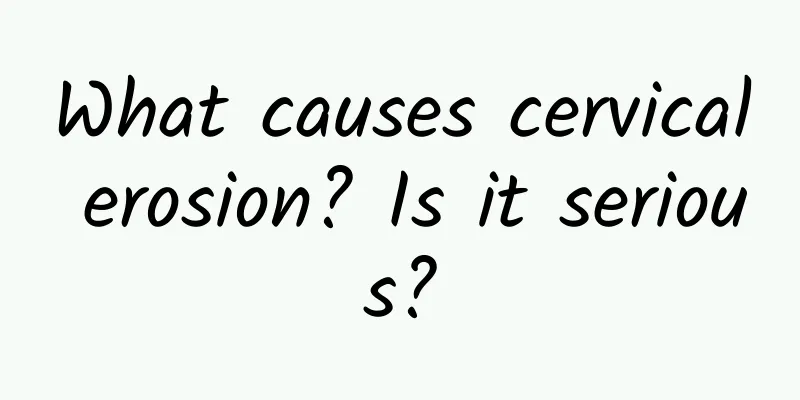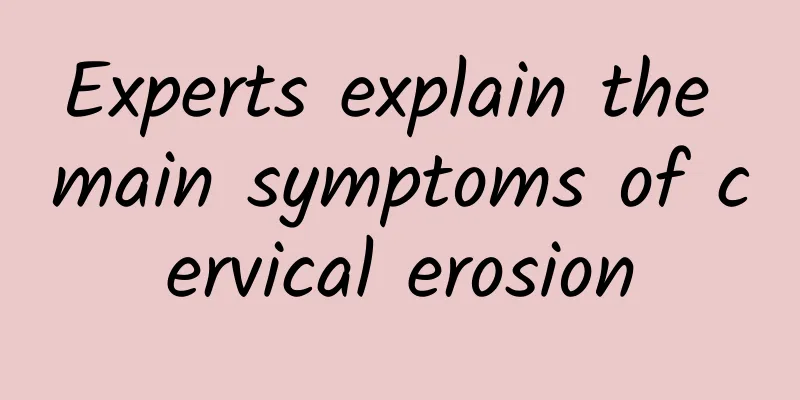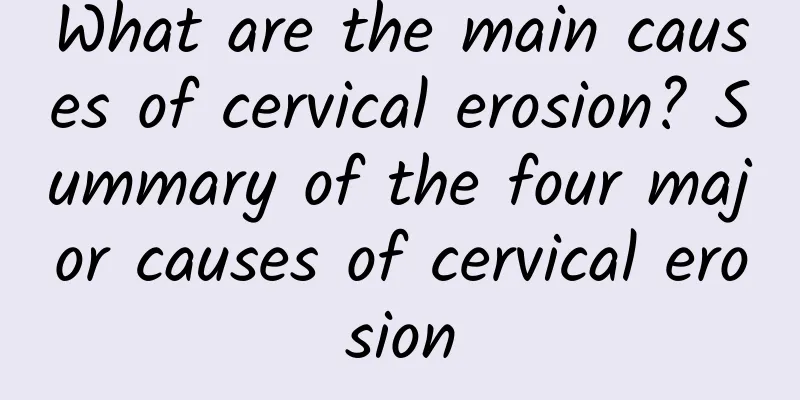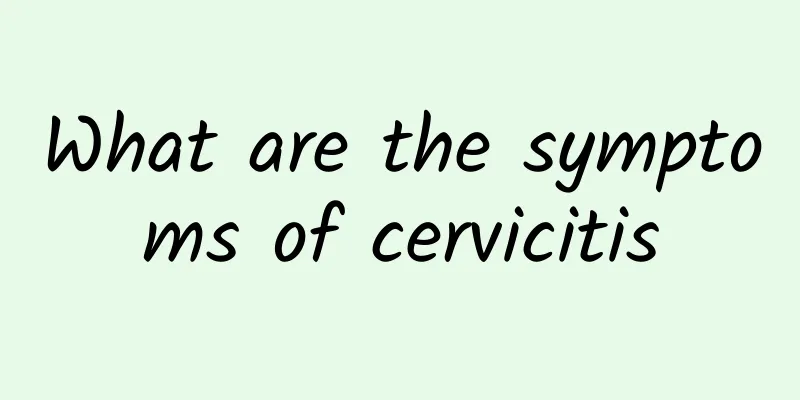What causes cervical erosion? Is it serious?

|
Cervical erosion is a phenomenon caused by ectopic or inflammatory reactions of cervical epithelial cells. It is usually not serious, but needs to be evaluated based on specific circumstances. The causes of cervical erosion include changes in hormone levels, chronic inflammation, infection, etc. Treatments include medication, physical therapy, and lifestyle adjustments. 1. Changes in hormone levels are one of the common causes of cervical erosion. During puberty, pregnancy or when taking birth control pills, the estrogen level in women's bodies increases, which may cause the cervical columnar epithelium to move outward and form erosion. This situation usually does not require special treatment, and regular observation is sufficient. 2. Chronic inflammation is also an important factor leading to cervical erosion. Long-standing diseases such as cervicitis and vaginitis can stimulate cervical tissue and cause erosion. In this case, antibiotics such as metronidazole and clindamycin can be used for anti-infection treatment. At the same time, pay attention to personal hygiene and avoid using irritating lotions. 3. Infection is another important cause of cervical erosion. Human papillomavirus (HPV) infection, gonorrhea, chlamydia infection, etc. may cause cervical erosion. For HPV infection, interferon gel, Baofukang suppository and other drugs can be used for treatment, and cervical conization surgery can be performed when necessary. Gonorrhea and chlamydia infection require the use of antibiotics such as ceftriaxone and azithromycin for treatment. 4. Physical therapy is one of the effective means of treating cervical erosion. Common physical therapy methods include laser therapy, cryotherapy and electrocoagulation therapy. Laser therapy uses high-energy laser beams to burn eroded tissue and promote the growth of new epithelium. Cryotherapy uses liquid nitrogen to freeze and destroy eroded tissue, while electrocoagulation therapy uses high-frequency current to burn eroded tissue. These methods must be performed under the guidance of a doctor. 5. Lifestyle adjustment also plays an important role in preventing and treating cervical erosion. Maintain good personal hygiene habits, avoid using irritating lotions, change underwear regularly, and avoid unclean sexual behavior. Eat more foods rich in vitamins C and E, such as citrus fruits and nuts, to enhance immunity. Moderate exercise such as yoga and walking can also help improve pelvic blood circulation and promote cervical health. Cervical erosion is usually not serious, but treatment measures should be taken according to the specific cause and symptoms. Erosion caused by changes in hormone levels usually does not require special treatment, while chronic inflammation and infection require medication. Physical therapy and lifestyle adjustments are also important means. Regular gynecological examinations and timely detection and treatment of problems are the key to maintaining cervical health. |
<<: Does cervical hypertrophy and ectropion affect pregnancy?
>>: Early symptoms of ectopic pregnancy
Recommend
What factors can delay menopause in women?
Every woman hopes that her menopause will come la...
What are the small blood clots that are common during menstruation?
What are the small blood clots that are common du...
What are the auxiliary diagnostic methods for vulvar leukoplakia?
Vulvar leukoplakia is a very common female gyneco...
What are the types of multiple uterine fibroids?
Clinically, the incidence of multiple uterine fib...
Four major invasion pathways of pathogens that cause adnexitis
Gynecological diseases are very complicated. Alth...
The consequences of untreated endometrial tuberculosis
Endometrial tuberculosis is a common gynecologica...
When is the most effective time to do it: morning, noon or evening? Learn the basics of successful muscle training in one go!
Q:Morning, noon or evening, when is it most effec...
How to avoid pelvic peritonitis
How to avoid pelvic peritonitis? There are many f...
The causes of cervicitis that everyone needs to know
Cervicitis is a gynecological disease that harms ...
Is the stinging reaction of endometrial tuberculosis serious?
Is the stinging reaction of endometrial tuberculo...
Let's introduce the specific manifestations of the symptoms of cervical hypertrophy
Patients can better treat cervical hypertrophy by...
Multiple diagnostic methods for cervical precancerous lesions
Many women do not pay attention to their own hygi...
Experts explain the main symptoms of vulvar leukoplakia
Vulvar leukoplakia is a gynecological disease tha...
Introduction to the three main points of preventing cervical erosion
Among common gynecological diseases, cervical ero...
Please pay attention to the causes of pelvic inflammatory disease
Pelvic inflammatory disease is a very common gyne...









